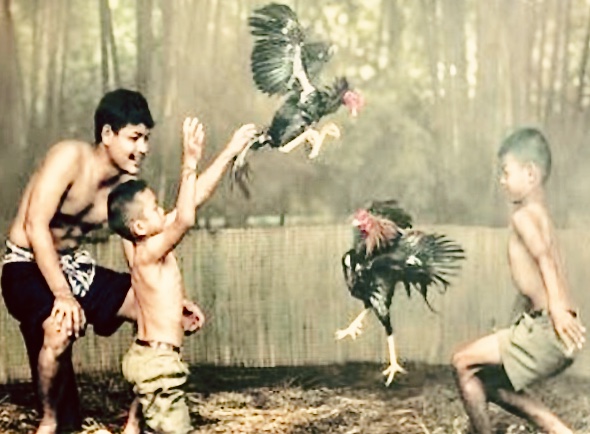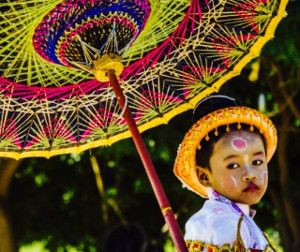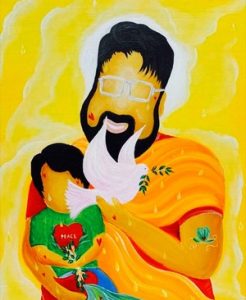
Hi, Hope you’re well.
If you have a minute, and if you don’t already know them, I would like to introduce you to the Hmong,
While here in Laos, we’ve had the pleasure of meeting many Hmong, an ethnic group here in Asia that have been persecuted for years, and are one of the Unrepresented Nations and Peoples in our world.
Not too very long ago, the Hmong were recruited by the U.S.A.’s Central Intelligence Agency during the Vietnam War in their fight against the Viet Cong here in Laos and Vietnam. Even though the CIA was never “officially here” in Laos, they trained the majority of the Hmong men and relied on this “Secret Army” to block the infamous Ho Chi Minh trail. After the US was defeated and retreated out of South East Asia, the Hmong were basically left to fend for themselves and to feel the wrath for helping the U.S. from the new powerful communist party. Many spent the subsequent 40 years hiding, fighting, or in refugee camps in places like Thailand. Even now, a few kilometres from where I’m writing this, there’s still some Hmong hiding from the Lao communist army.
Fortunately today, most on both sides have moved on from this ugly past and the Hmong have assimilated here in Laos and around the world. As I write this, in a small restaurant, my waitress is a Hmong woman. And like her, most have a quiet sense of self, a proud culture, their own language, and there’s now a diaspora of Hmong around the world, especially in the USA (Minneapolis/St. Paul, Sacramento, Milwaukee).
https://www.youtube.com/watch?v=Yugytt3ipck&t=179s
Most Hmong are Animist, a religion that believes “objects, places and creatures all possess a distinct spiritual essence…where all things, animals, plants, rocks, rivers, weather systems, human handiwork and even words, are animated and alive”. Cool. Even more interesting if you’re here to help them.
Suzanne is teaching at the only Children’s hospital in all of central and northern Laos. It takes some Hmong 15 hours from their remote village to finally bring their sick child to this free hospital.
Some are acutely very sick, some have been sick for years. The parents of course love their children, but according to their culture, all Hmong must die at home. Always.
For Dr. Suzanne, as an expert at keeping people alive, this can be complicated. Doctors are supposed to do everything they can to help their patients live. When does a doctor say, “ok, I respect your beliefs, and even though your baby is better off here, you can now take your daughter back on the tuk tuk, then get on the boat across the Mekong, catch the 8 hour bus towards China, and then walk 2 more hours back to your village”.
Or more complicated, what if there’s something simple a doctor could do to keep a baby alive, but culturally or religiously the parents think it’s time for the inevitable, and leave because they can’t take the chance of death not occurring at home, and so their son dies of something easily treatable?
Before coming to Laos, Suzanne read a book about the Hmong that she really enjoyed. If you’re interested in learning a little more about these incredibly unique people, she recommends The Spirit Catches You and You Fall Down. It’s a story similar to what Suzanne is experiencing, an American doctor, a young sick Hmong girl and her family, and cross cultural misunderstandings.
Me, being the unintellectual of the two, would recommend a movie called “Gran Torino”, staring a potty mouthed Clint Eastwood and a full cast of Hmong actors dealing with the same, clashes of cultures in Detroit.
In the evenings, I’ve enjoyed volunteering as an English teacher to young Hmong men and women. They’re incredibly bright and ambitious, speaking first their mother tongue of Hmong, second Lao, third Thai, and now some English. Tonight, it was myself and nine 18-25 year olds who shyly ask me serious questions.
One 18 year old boy, the only one with a smartphone, was confused and showed me a picture of somebody in front of a T.V. giving “the bird”, or flipping off the television, as Donald Trump was projected on the screen. I explained to him that this person in fact did not think the U.S. president was number one, but most likely the opposite. The young man excitedly showed his classmates the photo and to my surprise, each one of them practised this new skill with proficiency. Like I said, I’m only a volunteer.
They also patiently teach me some Lao. They’ve shared some important basics, and some extra terms that specifically I might hear. Such as…
Hello, which is Sabai Dee, which awesomely literally means “it goes well”.
Thank you…Khop Jai.
I think you need a face lift…Yu Chin Tu Fat
Stupid man…Dum Gai
I thought you were on a diet…Wai Yu Mun Ching?
Your body oder is offensive…Yu Stin Ki Pu
It’s great being in a cross cultural exchange where we can learn from each other.





